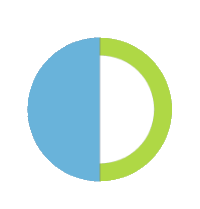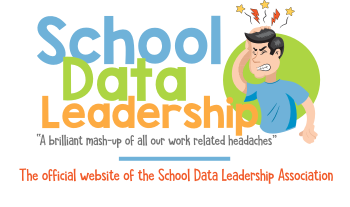
Intellectual humility a willingness to own up to one’s intellectual limitations and mistakes. Unconcerned with intellectual status or job titles.
For educators, embracing the concept of intellectual humility involves acknowledging their own limitations and mistakes, and fostering an environment where intellectual status or job titles do not overshadow the pursuit of knowledge. Here’s how educators can integrate intellectual humility into their teaching methods and classroom culture:
1. Encouraging a Culture of Openness and Error Acceptance
Intellectual humility in education means creating an environment where both teachers and students feel safe to admit when they don't know something or when they've made a mistake. Educators can lead by example, openly acknowledging their own errors and limitations, thus modeling how students can learn from their own mistakes and view them as opportunities for growth.
Real world examples:
- A math teacher admitting they made a mistake in calculating a problem on the board and asking students to help identify and correct the error.
- A history teacher acknowledging gaps in their knowledge about a particular historical event and inviting students to share additional perspectives or information they may have.
2. Promoting Equitable Classroom Discussions
An intellectually humble educator ensures that all voices in the classroom are heard and valued, regardless of the students' academic standing or confidence levels. This might involve using teaching strategies that give quieter students a platform, like think-pair-share or small group discussions, ensuring that everyone’s contributions are considered.
- An English literature teacher using numbered popsicle sticks or an online randomizer to call on students, ensuring that quieter voices are heard during discussions.
- A philosophy professor breaking the class into small groups to discuss complex concepts, encouraging all students to contribute their thoughts and interpretations.
3. Facilitating Reflective Learning
Educators can encourage students to engage in reflective practices that question their own understanding and biases. Activities like reflective journals, peer teaching, and self-assessment can help students learn to evaluate their knowledge critically and understand that learning is a continuous process.
Real world examples:
- A science teacher asking students to keep a lab notebook where they record their hypotheses, observations, and reflections on the experiment's outcomes.
- A language arts teacher implementing peer review sessions where students provide feedback on each other's writing and reflect on how to improve their own work.
4. Prioritizing Learning Over Grades
To foster intellectual humility, educators can focus more on the learning process rather than the outcome (grades). This involves providing feedback that is focused on students' development and understanding rather than solely on right or wrong answers. Such feedback helps students see learning as a journey of continual improvement.
Reak world examples:
- A music teacher providing detailed feedback on students' performances, focusing on areas for improvement and growth rather than assigning a letter grade.
- An art teacher encouraging students to experiment with different techniques and materials, emphasizing the learning process over the final product.
5. Engaging with Diverse Perspectives
Teachers can introduce students to a variety of perspectives and interpretations within their subject areas. This not only enriches students’ understanding but also shows them that knowledge is often complex and multifaceted, and that being intellectually humble involves being open to ideas that challenge their own.
Real world examples:
- A sociology professor inviting guest speakers from different cultural backgrounds to share their experiences and perspectives on societal issues.
- A political science teacher presenting multiple viewpoints on controversial topics and encouraging students to analyze the merits and limitations of each perspective.
6. Valuing Continuous Professional Development
Intellectual humility is also about educators continuing to learn and grow in their field. Engaging in professional development, attending workshops, and staying updated with the latest educational research show students that learning never stops, regardless of one's expertise or position.
Real world examples:
- A mathematics department organizing regular workshops for teachers to learn about new teaching methodologies and educational technologies.
- An English teacher participating in a book club with colleagues to discuss and analyze contemporary literature and its potential classroom applications.
7. Democratizing the Learning Environment
By reducing the hierarchical gaps between students and teachers, intellectually humble educators democratize the learning environment. This might involve collaborative learning where teachers and students learn from each other, recognizing that both parties bring valuable knowledge and experiences to the classroom.
Real world examples:
- A biology teacher encouraging students to share their personal experiences or observations related to the topic being studied, acknowledging that students' lived experiences contribute valuable knowledge.
- A physics teacher inviting students to co-create classroom guidelines and norms, fostering a sense of shared responsibility for the learning environment.
8. Adopting Adaptive Teaching Methods
Educators who demonstrate intellectual humility are adaptable in their teaching methods. They are open to changing their teaching strategies based on student feedback and learning effectiveness, showing that they value the educational outcomes over their personal teaching preferences.
In essence, intellectual humility in education entails acknowledging one's limitations, valuing continuous learning, and creating a classroom culture where knowledge is democratically shared and constructively critiqued. This not only enhances the learning experience but also helps to cultivate respectful and thoughtful future citizens.
Real world examples:
- A language teacher modifying their lesson plan based on students' feedback, realizing that their initial approach was not effective for certain learners.
- A computer science teacher experimenting with different coding environments or software based on students' preferences and learning styles, recognizing that a one-size-fits-all approach may not be optimal.
